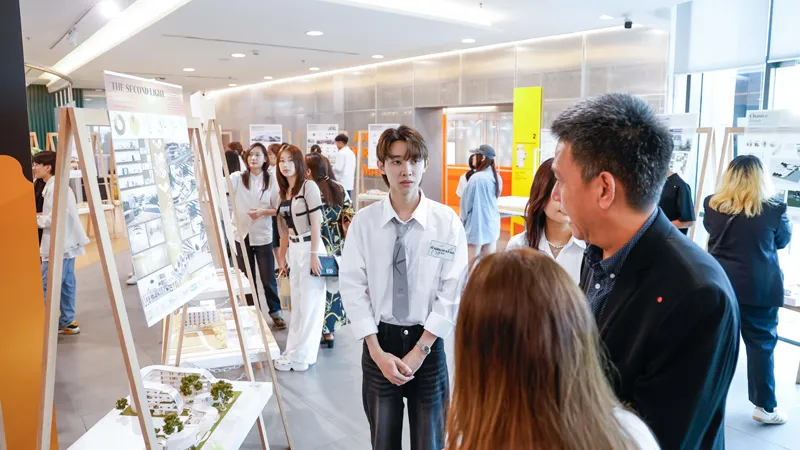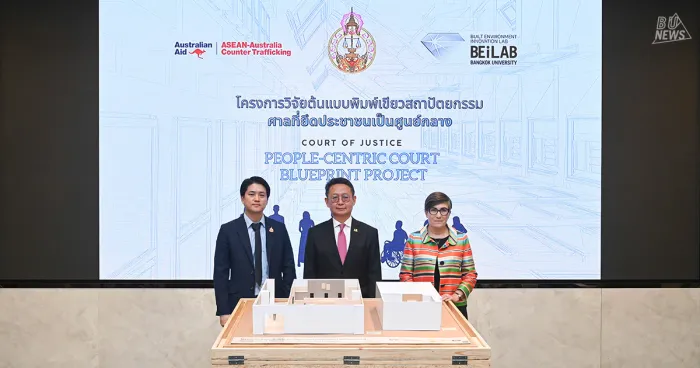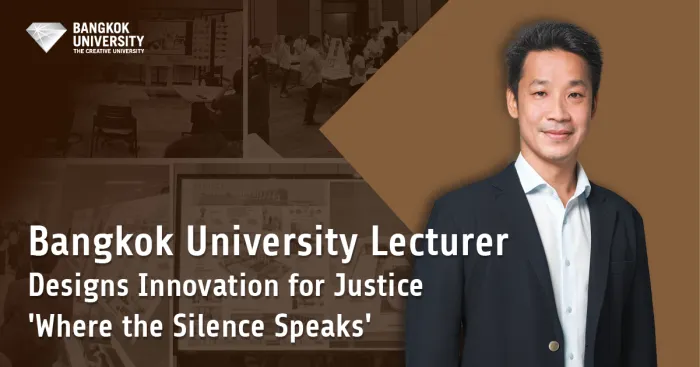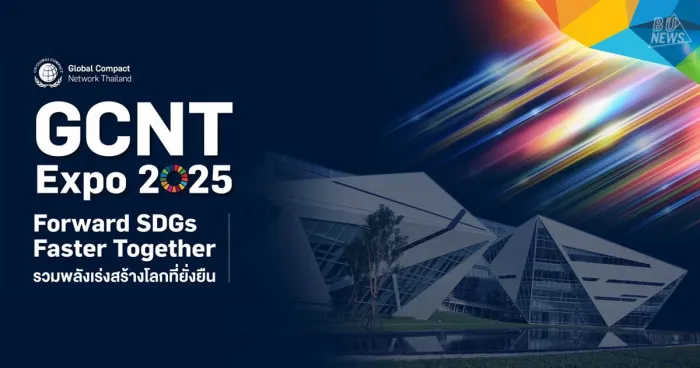Featured Stories
School of Architecture — Featured Stories — Architecture of Second Chances: "Walls to Welcome" Exhibition Offers New Perspectives on Post-Release Detention Facility Design
Architecture of Second Chances: "Walls to Welcome" Exhibition Offers New Perspectives on Post-Release Detention Facility Design

School of Architecture at Bangkok University, in collaboration with the Thailand Institute of Justice (TIJ) and with support from Krung Thai Bank, Ban Lae Suan, the Research and Creative Design Center of the Faculty of Architecture, Art and Design at King Mongkut's Institute of Technology Ladkrabang, the Built Environment Innovation Research Center at Bangkok University, and Tangton Dee Restart Academy has launched the creative exhibition "Walls to Welcome" featuring designs for post-release detention facilities that balance social safety with providing opportunities for ex-offenders. The exhibition was developed through a collaborative design process with criminal justice experts and showcases five models of post-release detention facilities. It explores how spaces can rehabilitate and support the reintegration of former inmates back into society, transforming protective "Walls" into "Welcome" opportunities that increase acceptance and challenge traditional concepts of detention facilities. The designs present post-release facilities that balance societal safety with creating new opportunities for those returning to society.


The exhibition presents 50 architectural design projects by students, divided into 5 groups:

1. Area 13: Reimagined - JSOC Control Facility at Klong Prem Central Prison, a secure facility redesigned with a new perspective and image, creating an environment conducive to therapy and rehabilitation to prepare inmates for reintegration into society.

2. CBT Klong Prem - Psychiatric Rehabilitation Center for Ex-Offenders at the Prison Hospital, providing care through doctors, family, and close relationships to build confidence and life skills.

3. Returning Good People to Society - Agricultural and Livestock Vocational Training Center at Khao Mai Kaew, Rayong, promoting agricultural and livestock vocational training connected with nature for therapeutic rehabilitation.

4. Transitional Housing - Urban Community Rehabilitation Center in Bang Praek near Bang Kwang Prison, an experimental space for ex-offenders and community members to live together, focused on treating self-control issues related to triggers.

5. Halfway House, Pula Rayo - Fishing Community Center, Narathiwat, a space that promotes self-reliance and reduces suspicion through community participation.

The event was honored by the presence of Ambassador
Adisak Panupong, Advisor to the Thailand Institute of Justice, who presided over the opening ceremony. Distinguished guests included Prof. (Special) Dr. Kittipong Kittayarak, Chairman of the Board of the Thailand Institute of Justice;
Dr. Anuwan Vongpichet, Deputy Director of the Institute; Mr. Komol Prompeng, Deputy Permanent Secretary of the Ministry of Justice; Ms. Nawarat Nakwichit, Head of International Affairs Development, Justice Process Policy and Plan Coordination Division; Dr. Kattiya Ratanadilok, Director of the Justice Process Research and Development Institute, Ministry of Justice; Ms. Walailak Chumchuen, Director of the Central Women's Correctional Institution; Dr. Jarassa Karnkaset, Director of the Department of Corrections' Division of Coordination and Promotion of Treatment for Female Inmates; and more than 40 parents of participating students.



Based on votes from exhibition visitors, 5 outstanding works were selected:

Mr. Pattarapol Vechubol from school of Architecture, Bangkok University, received the Excellent Design Award and an educational scholarship of 10,000 baht.
Student from school of Architecture, Bangkok University each received the Best Design Award and educational scholarships of 5,000 baht each

Ms. Patcharin Kaensuwan

Mr. Weerapong Promwong

Ms. Alaya Martinetto

Mr. Worakrit Kaew-alongkorn

The "Walls to Welcome" exhibition not only presents interesting architectural concepts but also raises important issues about creating an effective and humane justice system focused on sustainably reintegrating good citizens back into society.


This exhibition continues the concept of awareness of the root causes of corruption and designing solutions, which was highlighted in the short film competition under the "Thailand Rule of Law Fair: Investing in the RoL for a Sustainable Future" project. The films highlighted problems through phrases like "prisons are for imprisoning the poor," while this exhibition presents systematic solutions for real change by using environmental design to support the reintegration of good people into society.






